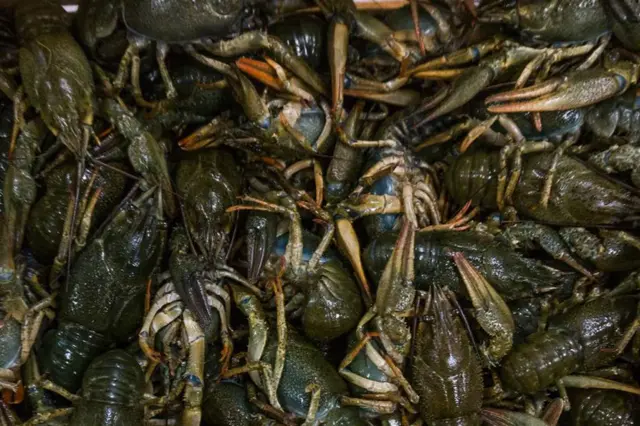Two Hongkongers were struck with a muscle condition rarely heard of in the city after eating crayfish from the Chinese mainland.
In the first case reported by the Centre for Health Protection on Thursday, a 30-year-old woman developed symptoms of rhabdomyolysis, including severe muscle pain in her back, chest, shoulder and thigh, five hours after eating cooked crayfish at home on September 4.
Rhabdomyolysis, a potentially fatal condition, involves the breakdown of muscle cells, which may result in kidney damage and other complications.
Since 1924, the condition has been linked to consumption of freshwater fish and crayfish in Northern Europe, the United States, Brazil and China, both as sporadic cases or in clusters.
The woman attended the emergency department of Prince of Wales Hospital in Sha Tin and was admitted on September 5. She was later confirmed to have rhabdomyolysis.
After treatment, she was discharged on Thursday in a stable condition.
An investigation showed she had bought the cooked crayfish from a Hunan-style restaurant in Bao’an district in Shenzhen on September 4. Her two family members also consumed the meal but were asymptomatic.
The other case involved a 55-year-old woman who developed severe muscle pain in her shoulder, arms and legs about four hours after eating cooked crayfish in a Shenzhen restaurant on August 20.
She was admitted to Prince of Wales Hospital on August 21.
Her clinical diagnosis was also rhabdomyolysis. She was discharged on August 22 after treatment.
The centre said an unknown heat-stable toxin that accumulated in the implicated food was a possible cause of the condition.
It advised that crayfish should be cleaned before cooking, and that they should be cooked thoroughly.
The public should not overindulge in crayfish and should not consume their heads and internal organs.
Reports of rhabdomyolysis due to overconsumption of crayfish are commonly seen in the summer on the Chinese mainland, where they are a popular snack.
(SOUTH CHINA MORNING POST)
 简体中文
简体中文



